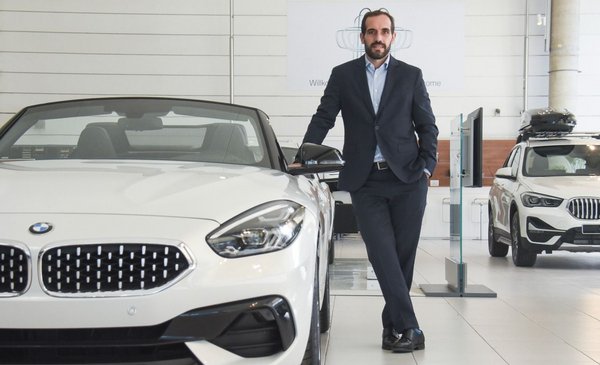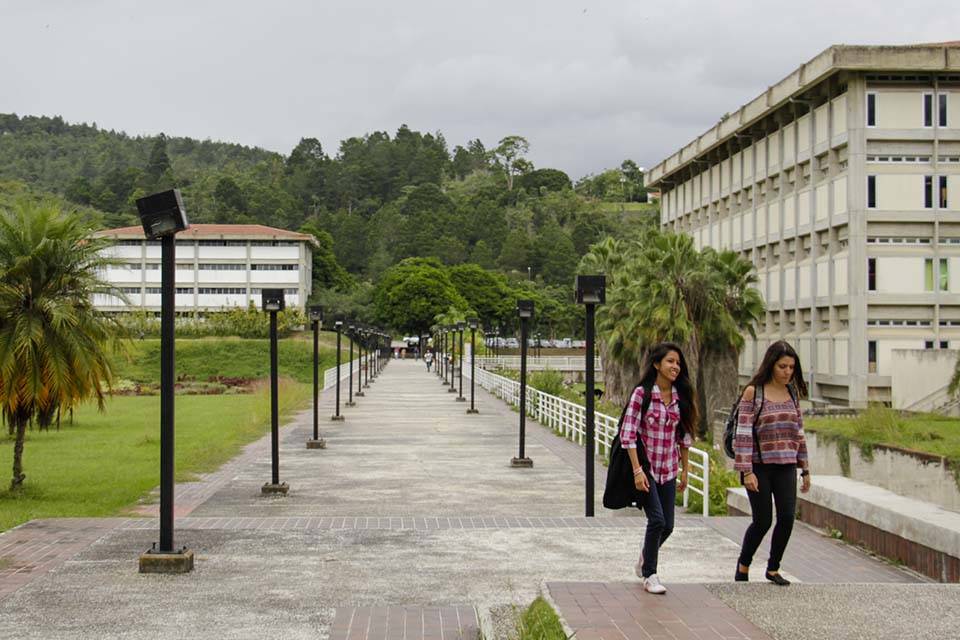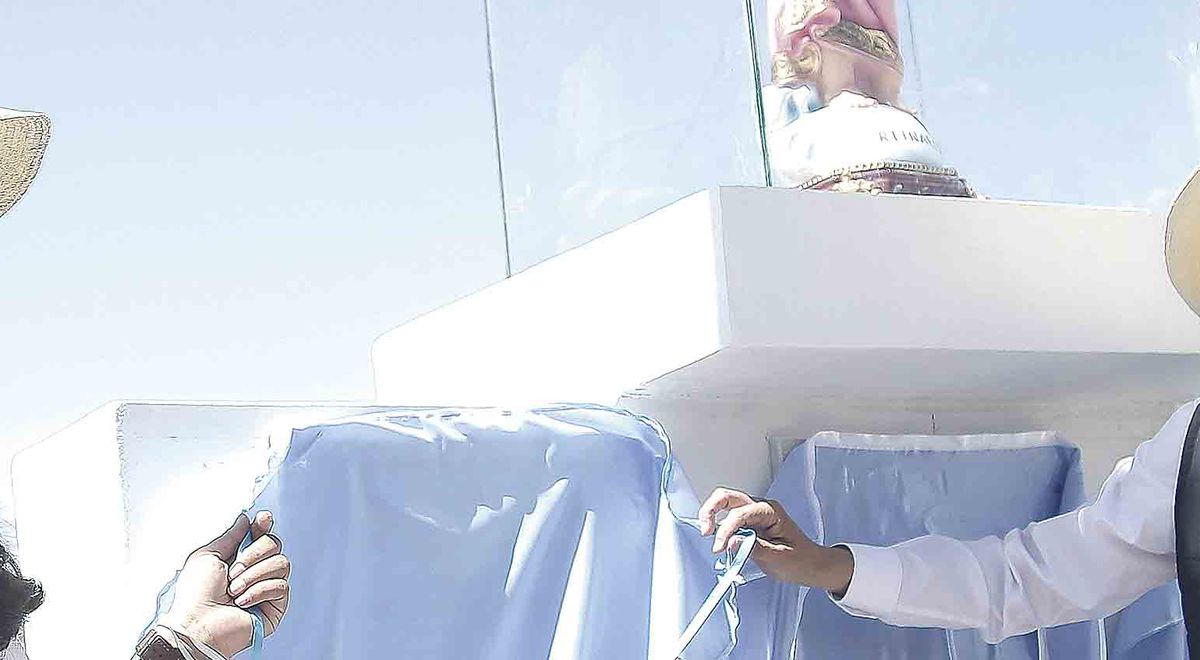It comes from the kidney of BMW, with more than 15 years of history within the company, the Argentine Federico Bangenter made a career and became involved with the brand, especially with motorcycles, of which he declares himself a fan.
A month and a half after his arrival in Uruguay, the new general manager of Magna Motors –a BMW representative company in Uruguay– wants to bring the country to the world standard, “not that things arrive a year later,” he stressed in a conversation with Café & Business.
Along the same lines, he plans for the firm to promote new forms of financing so that vehicles are affordable for more people and transcend the segment with the highest purchasing power that already chooses them. In this sense, the head of the firm pointed out that “without being the leasing of the United States, where you never get to have absolutely nothing, it is a tool to be closer”. Along the same lines, he pointed out that these instruments could allow “for the same money that they are buying a car in a lower segment, they can get on a premium vehicle.” Below is a summary of the exchange with the new general manager of Magna Motors in Uruguay.
How did your relationship with BMW begin?
I started at BMW 16 years ago as a motorcycle and Mini Marketing trainee. At that time, when I entered, I did not even know that BMW had motorcycles. In Argentina, the BMW motorcycle was not yet seen on the street. The segment has seen substantial growth in its accounts since the launch of the 310 model, which was about seven years ago. Previously, it was a very high segment so they were not seen, today they are everywhere. That’s where my fanaticism for motorcycles and Mini also started. After that I had a whole career in Argentina and the opportunity arose to move to Panama as sales manager for the region, where we handled the motorcycle part from Guatemala to Chile, in all countries except Argentina and Brazil. Two years after being in Panama, I had to move to Mexico, to San Luis Potosí, because the brand made the decision to move the entire operation to Mexico and have everything together. They were eight years there in Mexico, initially in the motorcycle division and later in the car and Mini division. Now, I have been here for almost two months with great challenges and with the desire to continue developing myself and the brand in Uruguay. In the last 10 years I have always had some contact in Uruguay, so it is not something new for me, but what is new is being here.
How do you see the Uruguayan market in terms of the premium segment?
I believe that a fairly accelerated transition towards electrification is taking place in the world and Uruguay is no exception. Here it is not only happening due to an external situation, but also the country itself is looking for it through very important elements that not all countries have. One thing is what we offer the markets and another how that impacts the customer. For electrification to have a positive impact on the customer, there must be two fundamental elements: infrastructure and a fiscal structure that allows these cars to benefit, which are much more expensive to develop than combustion cars. These things are making Uruguay, together with a select group of two or three countries in the region, moving faster than the rest in electrification. In a very short term we are going to see more cars than we imagine with some level of electrification.
Is electric mobility a priority in your business model?
Clearly, in fact, one of the things we’re looking for is to collaborate with that. We believe that, with the product supply, if we do not help in something, there will come a time when the number of chargers will not be enough, even if the government makes efforts. There we have two axes of work: the first is that each fully electric car – which is the one that yes or yes needs to be connected to move – carry a charger with its installation. This means that the client does not necessarily need the public infrastructure, but only occasionally. On the other hand, we are seeing how we help to make a donation of chargers to promote the very great efforts that the government is making, UTE in particular, in trying to expand the charging infrastructure. Now comes a challenge in this regard, which is to switch to direct current through the most powerful chargers that supply fully electric cars.
Of all the vehicles on the market today, how many are electric and how many are combustion?
Totally electric today there are still a few, it will be one or two cars a month, that is not even 5% of the sale. On the other hand, the electrified ones are the cars that have a combustion engine, an electric motor and its battery, which are the ones that are also plugged in (known as plug-in hybrids) and are totally autonomous, allowing a range of between 30 and 50 kilometers , enabling you to get around without fuel and perhaps fuel up for a longer weekend trip. Now we have some fluctuations in supply, especially due to logistics issues, but the sale of electrified vehicles is between 15% and 20% of the total number of vehicles delivered. We come from scratch, so it is a very strong change in a short term.
Both the pandemic and the crises in logistics chains have caused the automotive industry to suffer from delivery delays. How did it impact the brand and how do you think it can be resolved?
Undoubtedly, a large number of inconveniences have been generated, but I also have no doubt that BMW is one of those that has come out of all this the best. There are many factors, but the most complex is logistics. In Uruguay, we do not have a situation drastically different from what we could have had before the pandemic and, given the situation and the investment made by Magna, the stock situation in the country today is better than it was before the pandemic.
The client segment is characterized by being very demanding, what do you look for when deciding?
I have always believed that at BMW we have a responsibility to show everything we have. Seeing two Z4s in a showroom is something that didn’t happen before, they didn’t see each other. What the client wants is to be able to see the palette of options that we offer. Seeing a variety of colors and models was not something for which BMW was characterized in Uruguay. We want to be at the same level as we are in the world, not for things to arrive a year later. Also, try to give them the best service, which is one of the priorities that we all have as individuals within this organization.
What objectives do you have outlined for your management?
There are some objectives that are very clear. First, the market leadership, that BMW is the leader in the premium segment. Then, being pioneers in the transition to electromobility is another of our great goals. To this we add the focus on the client, which is the basis of all management. I think we are on the right track.
How do you see the predisposition of Uruguayans to decide on a premium vehicle?
I think there are some very positive factors if we look at the penetration of the premium segment over all cars. Penetration is good, but I think there are opportunities for more Uruguayans to get into our premium segment vehicles. There is an interesting potential in the issue of financing. From what I have seen in these weeks, financing in Uruguay for vehicles is traditional. There are fairly advanced financing tools on the market in several countries, including in the region, that could allow people who today are buying a car in a lower segment for the same money to get into a premium vehicle. I believe that we must be able to offer customers the tools so that those who want and want to jump into the premium segment. It is something we will work on and hope to have positive results.
What are these financing mechanisms like?
There’s a very well-known BMW product called Select, where there’s not only a down payment and installments, but there’s an down payment, installments, and a final payment. This means that, although there is a final balance, there are fewer installments and less is depreciated in the middle. This leads to a cycle of renewal which is what we constantly do. In the south we have the idiosyncrasy of wanting to be owners, but we believe that these models with payments at the end are not the leasing of the United States. where you never get to have absolutely nothing, but it is a tool to be closer. It generates very interesting opportunities. Leasing for individuals is not used here either, there are many things to do. I believe that financing democratizes this type of vehicle and it is an opportunity that we have to explore and execute. The world average for this type of instrument is the change between two and three years, but the tool must be adapted to the idiosyncrasies of the country. It is not about copying a model, but about adapting it.







